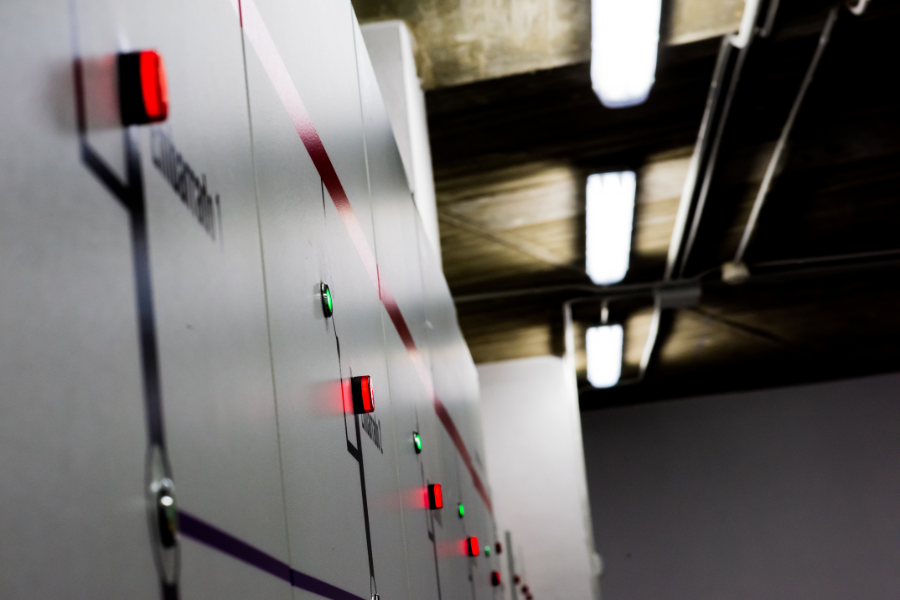IMDEA Energy researchers develop methods for stability assessment of power networks to ensure continuity of power supply
Power grids are complex and elaborate physical systems. The ability of maintaining all system variables, like voltages and currents, within their acceptable ranges is usually referred to as power grid stability. Grid integration of renewable energy sources and electric vehicles that use power converter interfaces for the grid connection exacerbates the task of analysing the networks and jeopardizes their stability. Electrical Systems Unit of IMDEA Energy have made some important advances with respect to modelling and stability analysis of electricity networks and microgrids.
Stability limits of distribution networks
In the past, analyses of power network stability were usually performed based on linearized, simplified, equations. This approach is computationally fast and accurate but does not account for the cases were the system parameters diverge significantly from their nominal values. For certain cases, more advanced mathematical tools should be used for the analysis and study of power systems with high penetration of power converters.
In the Electrical Systems Unit of IMDEA Energy, a novel methodology for studying modern distribution grids in the presence of multiple power converters was developed. This methodology is based on bifurcation theory, a mathematical theory that is derived from the field of dynamical systems. This theory assumes both qualitative and quantitative changes in a system, including its stability, when the system parameters change significantly. The analysis is performed using the complete mathematical models of the converters and the power grid, not the simplified ones.

An example of electrical distribution network
In this methodology all the system models are firstly mathematically derived. Then, important grid and converter parameters are changed and the stability limits of the system tracked and identified using specialised software. Finally, the encountered stability limits are experimentally verified in IMDEA Energy SEIL facilities.
The methodology predicts accurately the stability limits of the grid when important system parameters change. The results provide a guideline regarding the safe operating regions in power grids and the design of power converter control parameters, ensuring the seamless power delivery, even under adverse conditions.

Bifurcation points when current saturation limits change
D. Moutevelis, J. Roldán-Pérez, M. Prodanovic, S. Sanchez-Acevedo, “Modelling of Load Tap Changers and Capacity Limits of Power Converters for Bifurcation Analysis of Electrical Distribution Networks” in IEEE Transactions on Power Electronics, doi: 10.1109/TPEL.2022.3141234
Microgrid Stability
In remote areas with limited access to power grids, microgrids are used to supply local loads from local power resources. Until now, diesel-powered generator sets have been used for this purpose. In recent years, renewable generation using power electronics converter interfaces has been increasingly used for the connection to local grids. These converters must produce a current of the same frequency as the grid, for which a synchronisation controller is frequently used. An alternative is to use a control that mimics the operation of conventional generators that use an implicit way to synchronise. These two strategies have been studied in depth for their application in conventional electrical networks and are widely used today. However, the frequency in microgrids can deviate significantly from its nominal value, making the synchronisation difficult. In addition, a large number of converters connected to a microgrid can give rise to interactions between their control systems potentially jeopardizing the microgrid stability. These interactions emphasise the importance of adequate system modelling and stability tools for the microgrids analysis.
 Microgrid formed by a conventional diesel generator and a renewable source connected via power converter that uses the synchronisation control loop.
Microgrid formed by a conventional diesel generator and a renewable source connected via power converter that uses the synchronisation control loop.
Electrical Systems Unit of IMDEA Energy has recently modelled different microgrid topologies, including those with diesel generators, power converters that use the grid synchronisation and power converters that mimic the operation of conventional generators. These models have been used to study the grid interactions of the converters that use the synchronisation control with conventional generators and with those that mimic conventional generators. It has been confirmed that microgrids with conventional generators have reduced stability limits. Also, when in the microgrids are formed only by power converters (with no conventional generation) the stability limits can be extended through an appropriate design of different converter control loops. The main findings have been summarized in a guide for the design of controllers for microgrid converters that facilitates integration of renewable energy sources and, therefore, further decarbonisation of energy supply. Finally, the developed models can be used for studying other aspects related to the microgrid operation and stability.

Stability parameters demonstrating dynamic interactions between power converter and diesel generator
Diana Patricia Morán-Río, Javier Roldán-Pérez, Milan Prodanovic, and Aurelio García-Cerrada, “Influence of the Phase-Locked Loop on the Design of Microgrids Formed by Diesel Generators and Grid-Forming Converters,” in IEEE Transactions on Power Electronics, doi: 10.1109/TPEL.2021.3127310.



